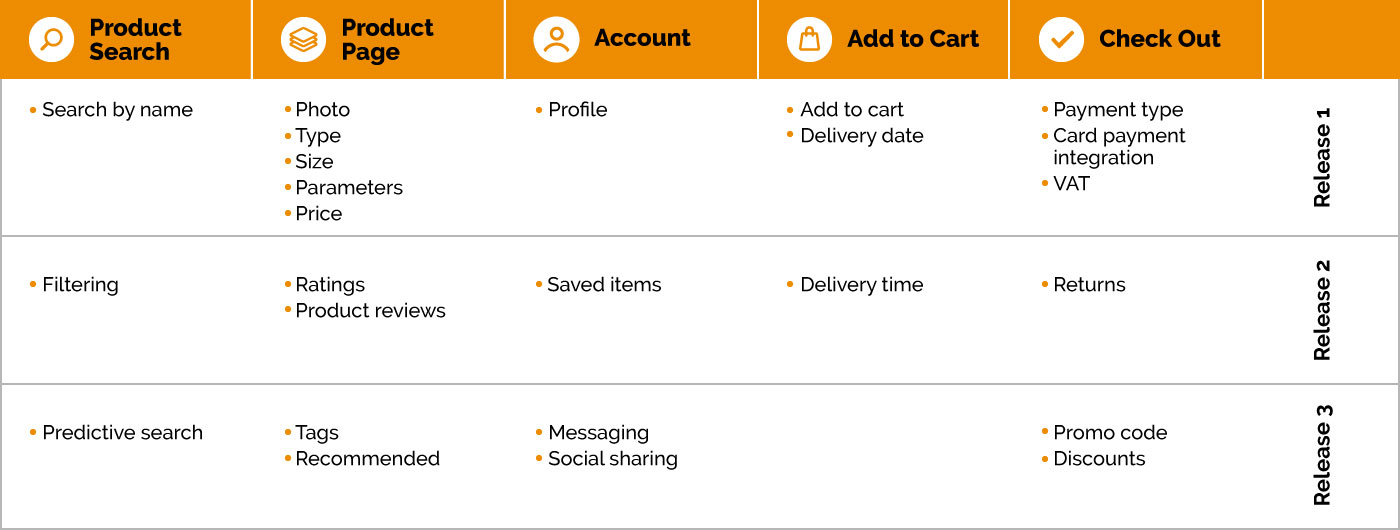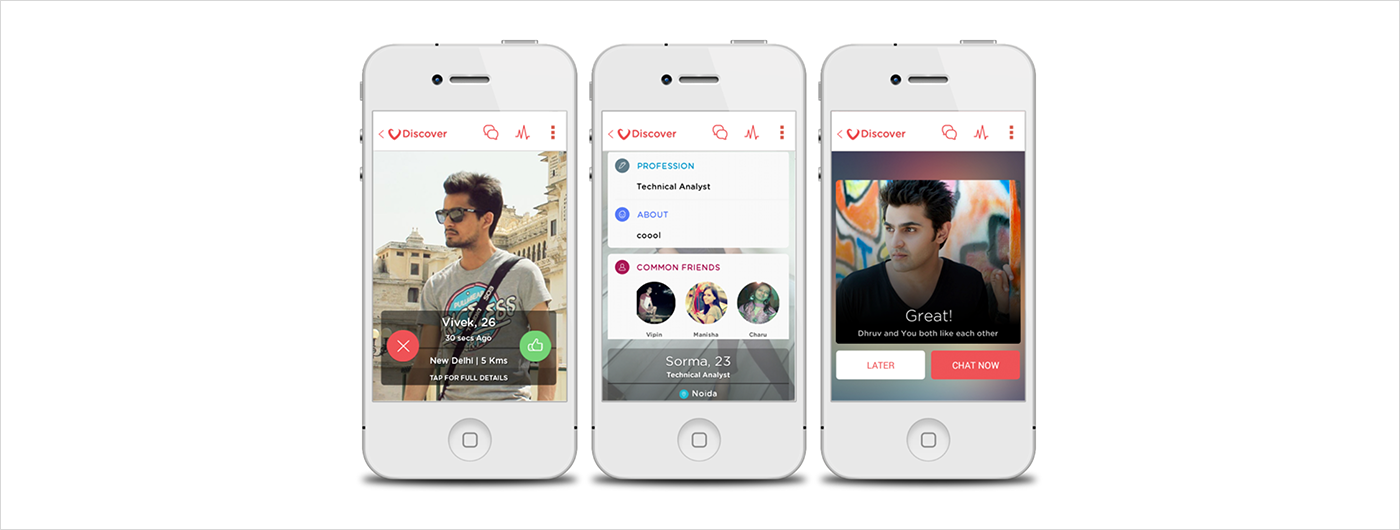
If you are nursing an idea of developing a new project, the next steps should be idea validation and testing. That is where creating an MVP for startups can save the day.
This article shares data and experience-driven insights from the Agente team on how to build a successful minimum viable product (MVP), which best practices to keep in mind, and what business benefits an MVP brings. Throughout, we’ll also point to examples of MVPs doing it right
Read on to have a good grasp of how you can build, launch, and test your business idea quickly.
What is an MVP?
An MVP is the simplest possible expression of your product that still delivers on your core user needs. Its primary goal is to test a hypothesis and make sure a product has the potential to resonate with the target audience and become in demand.
Despite such a solution having a minimum number of vital features, it is in no way a beta product version or a product functioning under the testing status.
It is true: you’ll need an MVP for testing.
But it touches on the idea of viability testing, not building malfunctioning and buggy software with half-baked functionality designed without any prior target audience’s needs and user flow analysis.
No matter how ambitious your notion could be, unprofessional MVP startup development will just zap your budget and the raised funds without paying off.
Here’s the deal:
MVPs assist you in finding out where potential business opportunities exist by releasing a product that:
- Offers the minimum yet critical set of features to operate
- Is well-tested, bug-free, and secure to use
- Boasts an intuitive user flow and interface
- Has a clean, powerful, and modern design, and
- Falls inside the limits of your budget

Thus, employing an MVP approach in your project’s development process helps:
- Validate your project idea and estimate the need for your product
- Enter the market as early as possible to win a competitive advantage
- Collect user feedback and suggestions to integrate them into your fully-fledged product quickly
5-Step Journey to Building an MVP for startups
What does the usual workflow to bring your startup idea to life look like?
When working on an MVP product, your software development company and you will need to travel the 5-step path to bring your project from an idea to viability.
Step# 1. Defining Your Target Audience
First, it’s essential to identify who your customers are and what problem your product will solve for them.
What problems will your solution solve? Why should a user opt for your product? What does your buyer persona look like? What are their interests, age, etc.?
Suppose you are going to build an eCommerce fashion app.
Buying clothes is a part of the day-to-day routine for many, so what could make your app so special that it can solve a specific problem?
That’s where you need to specify the goal of your app.
For example,
You choose to aggregate luxury clothing and accessories collections of both famous designers and new names in the world of fashion within a single platform.
Next,
It would be best if you created user personas—fictional representations of your typical customers—and analyzed their flow, i.e., the steps they need to take to reach their goal of buying fashion clothing online.
Read more about user flow in our article.
Step #2. Coming up with the Exact Features
Now that you have decided on the features and services that will be in your final product, it’s time to choose functionality you’ll include in the MVP.
For that, ask yourself the following questions:
- What will the main feature of the product be?
- What features are unique on the market?
- What features will delight users?
Then, you’ll need to write these features down and prioritize them in categories.
Creating a matrix that maps must-have, optional, and excessive features into several stages (releases) is one of the best practices for making a successful MVP.
Let’s take a look at the table below

What you see is a simplified example of feature story mapping for an eCommerce website MVP (the same goes when you create an online learning platform, a travel app, or any other product).
The top row highlights the must-have sections of the future product.
After prioritizing the features, it’s essential to define the ones for the first release.
These are the features that will make your minimum viable product.
Under each stage, you can see a number of features dedicated to each release.
Normally, the first release makes an MVP.
Step #3. Tools and Technical Stack Selection
One of the most popular judgments about a startup MVP development process is that technology matters less than the idea.
If you’re planning to extend it to the minimum functional product, it would be an excellent approach to take care of everything in advance.
However, this takes time and money. We’ve compiled the list of the most reliable but easy-to-use solutions for you to consider:
- Simple website templates: Squarespace, Wix, Sitebuilder
- Prototyping tools for MVP: Invision, Webflow, Bubble, Proto.io
- Industry-specific platforms: Shopify, Medium, Magento
- Web development frameworks: WordPress, Meteor
Step #4. MVP Startup Development
At this step, your project moves from something in mind to something in kind—the development process.
If your company is small and has limited resources, you might not be able to afford the custom MVP web development.
Then, do what you can with the existing tools.
Nonetheless, coding your MVP from scratch only will allow creating a more satisfying, unique experience for your future customer base.
Collaboration with a reliable and experienced software developer will let you save time and budget and secure you from releasing a non-viable unprofessional product.
Step #5. Testing and Iteration
Since MVPs are often developed in resource-limited environments, actual testing of the product’s functionality is often overlooked.
However, user acceptance testing is a must and is one of the best practices when creating an MVP for startups.
A product must present a viable value proposition to its audience.
Handing over your MVP to real users for beta testing will help you quickly estimate the drawbacks and advantages. Make sure to collect feedback from your users carefully and implement the changes accordingly.
But note that fatal error fixes only are made at the MVP stage.
Best MVP Examples
What makes us think that an MVP can grow into a successful product?
If you search the Internet, you’ll see plenty of MVP success stories—from Dropbox, Uber, Groupon, Buffer, etc.
Let’s take a quick look at the three used-to-be MVP ideas that have gone viral and raised to international fame.
UberEats
UberEats is a great example of an MVP. The app has a simple vanilla interface with minimum features:
- High-quality food photos
- Basic categories
Basic info on when the driver is arriving with your meals
Source: Stuff TV
Snapchat
Snapchat’s MVP was simple in the extreme. It had a single feature: sending and receiving photos that would disappear in 5 seconds.
The Snapchat team wanted to test a hypothesis on whether users want to see disappearing photos or not.
Source: Business Insider
Tinder
Tinder is an example of an MVP that was so good at the first release that it stays pretty the same up to now. The secret is its simple experience, the “iconic” swipe feature, and great design that has become flatter over time.
Source: Global Data Insights
Business Benefits of MVP Product Development
Now that you know the stages behind MVP product development and have seen how world-known brands used MVP to test their business ideas and validate market demands, let’s sum up which benefits MVP product development brings to a business:
Idea Testing
No matter how unique and innovative your idea is, it must be tested.
The most beautiful part of developing an MVP product is that you won’t need to invest years and millions in your idea to test how well it resonates with the users and your target audience.
Thus, the most basic set of features will provide insights into your idea’s feasibility and growth potential. Plus, customer feedback will help you learn about other must-have features your users expect to have in the upcoming version releases.
Market Demand Validation
Any product must solve a problem. MVPs allow learning for sure if your solution can meet the market demands.
Are there similar products that address the customers’ pain points better?
MVP startup development helps enter the market, explore the demand and quickly adjust based on the data you receive. You’ll need to act accordingly—reinforce your product with more unique features as your niche accepts differentiation or move to an entirely new idea if it does not.
Constructing Monetization Patterns
There are a host of monetization strategies available on the market. On the one hand, every startup expects its project to become profitable. On the other hand, customer expectations must be taken into account.
MVPs help integrate possible monetization scenarios into a product and test them as soon as a solution goes live.
Cost-Efficiency
Software development is a time and budget-consuming process that has certain risks.
Project failure is one of them.
Minimum viable products allow decreasing those risks and costs as such projects do not take long. Your software development partner will add the discussed set of features only to ensure your requirements and goals are met.
After testing the idea, you can start investing in turning your product into a feature-rich full-scale solution.
Attraction of Investors
There is no way to move forward without proper funding.
MVPs help spark investors’ interest in a promising idea and offer more than words, graphs, and numbers.
Presenting a live product with the first positive feedback helps mitigate investors’ risks and showcase your product as a reliable investment.
Fast Product Launch
Ideas keep flowing, and those who manage to be the first to enter the market successfully are the winners.
MVPs provide the opportunity to go live fast, at a lesser cost and time. Thus, your product gets to be tested in the initial phase plus receives valuable feedback from its first users.
Best Practices for Making a Successful MVP
What can be done to improve and speed up the process of creating an MVP?
We’ve gathered some best practices when creating MVP startups:
Proper Research of Audience and Competitors
Most product owners fail to conduct proper research on their competitors.
Almost everyone is aware of the need to check similar products on the market and make sure an MVP will offer something unique.
What if there is no direct competition?
It is still not enough just to showboat the product’s uniqueness.
Make sure it provides value to the customers.
Ready Templates
Don’t reinvent the wheel.
As time and cost matter a great deal at the MVP stage, you should:
- Use ready tools and templates. At the MVP stage, there is no need to develop libraries and plugins. Most of them can be found online, open source.
- Check other company products—some parts of the functionality have probably been developed earlier. This also concerns software components.
- Employ your company’s UI kit, if any.
That will speed up the development process and create a consistent look for out-of-the-box products.
Active Communication Between Developers and Clients
When striving to stay within the time and cost limits, clients actively suggest technical solutions they have used before.
Only after learning your business goals, the capabilities of the current MVP, and its implemented functionality, developers can suggest the optimal option to meet the client’s challenge and thus save time.
Active and frequent communication is vital to bridge the gaps between the two project visions.
Minimum Delightful Product
Building a product that satisfies customers is not enough. You need to have something they LOVE. Remember that it’s the real user you’re building for, not just investors.
Having researched their needs and received their feedback, you’ll be able to provide unique value to them.
Measuring Success After the Release
To predict the success of your MVP, you need to track metrics that indicate how your users interact with your product. At a minimum, make sure to check to following ones:
- The number of sign-ups
- The number of downloads and launch rates
- The percentage of active users and user behavior
- Client acquisition costs
- Client lifetime value
- Bounce rates
Knowing how your product is performing will help you understand whether it is going to survive on the market or whether it needs significant improvements in functionality or marketing strategy.
Legal Risk Mitigation
One significant difference between a large company and a startup is that a large company has significantly more brand risk and more sensitivity to legal risks.
A startup has no reputation and fewer concerns about “bending the rules” because of its lack of reputation and exposure.
Consider testing a particular value proposition in an invite-only closed beta tester group and claim your intellectual property rights as early as possible.
Agente Experience
Since 2009, the Agente team has been offering full stack mobile and web development services and has successfully released over 100 projects, including scalable MVP startup development ones.
When building an MVP, our team follows the flow described above and does everything possible to bring our client’s ideas to life in full. As a result, you receive a well-designed and tested solution that has it all to check its feasibility yet built for scalability in the long run.
The San Francisco Stock Exchange (SFSE) app development is one of the MVP project examples released by the Agente team.
The goal behind this project was to develop a set of design solutions and an MVP for the San Francisco Stock Exchange mobile app, a public platform for buying and selling U.S. small business financial securities—and to present it to investors and the first users.
Respectively, the scope of work for the project included as follows:
- Building brand identity
- Mobile app development
- Website development
- Pitch desk design
- MVP development for the mobile app
For more details about the SFSE case, navigate straight to the dedicated page. Alternatively, more Agente projects are available here.
Takeaway
In this article, we shared A-to-Z insights on how to create an MVP for a startup and touched on its primary business benefits. We also highlighted the importance of running a market and user persona research, feedback collection, and prototyping.
We hope you learned a couple of lessons after reading this post:
- Don’t make a full version of a product right away
- Make a minimum viable product simple but delightful
- No critical bugs are acceptable
- Test as early as possible
- Collect users’ feedback
- Launch-test-iterate until minimum viable perfection
And keep in mind that startup MVP development is only the first baby step of your product’s journey. It lets you validate the idea fast and easily without zapping much of your budget.
What makes a good MVP?
A good MVP is a product that meets your initial goals and lets you test the product’s viability idea based on the data obtained from real-life users.
If you are looking for an experienced partner to assist you in startup MVP development, the Agente team has the expertise to help you out. Request a quote today!
FAQ: MVP Development for Startups
What is the purpose of an MVP?
A minimum viable product (often referred to as an MVP) is a software solution that boasts enough features to attract early-adopter users and validate the product idea at the early stages of the development lifecycle.
An MVP allows presenting a product to the potential customer base and thus collecting data on their expectations and experience from the first interactions with the product to iterate and improve it accordingly.
In agile development, building an MVP for startups plays the leading part as it allows validating the idea based on the user input.
How long should it take to build an MVP?
Although no project is made similar, the process of building an MVP usually takes from 3 to 4 months.
It bears repeating that your software development company only will give you a more accurate evaluation of MVP development for startups. It will be based on the selected features set, the number of team members involved in your project development, design complexity, etc.
Can I hire Agente to develop an MVP for my startup?
Agente offers full-stack mobile and web development services aligned with a host of other associated activities much-needed for successful project implementation.
With over 12 years of proven experience in startup MVP development, the Agente team will push the envelope to bring your boldest project ideas to life. Contact us today!
Further reading: What is proptech industry?
Rate this post!
995 ratings, average ratings is 5.0 out of 5
Related Posts

How to Launch Your Online Travel Marketplace Platform in 2024?
Learn how to launch your own online travel marketplace platform in 2023 with our comprehensive guide and step-by-step insights.

14 January 2024
Marketplace Website Design and Development in 2024: Features, Tech Stack & Cost
Discover the latest in marketplace website design and development, explore features, technology stacks, and gain insights into cost-effective strategies.

Top eCommerce Website Design Features and Tips in 2024
While creating an online store, it is difficult to orientate quickly and understand how the website should look to create a positive impact on the owner’s income. It determines whether clients remain on store’s page, would they have confidence in the store and would they like to purchase

Ecommerce Website Revamp [The Ultimate Guide]
Learn why you should redesign your e-commerce website and how it can improve your online store's performance, including increasing traffic, engagement, and sales. Get expert tips now.

Effective Food Delivery App: Key Tips & Best Practices
In this article, we will share our experience in creating a design for a specialized food delivery management software, as well as best practices in designing such an application.

02 August 2023
E-learning Platform Development: Features & Steps to Build
Build an online learning platform with ease: A guide to essential features and step-by-step processes for successful e-learning platform development.
Let's talk
Is there a challenge your organization or company needs help solving? We’d love to discuss it.

Managing Director, Partner
Andrew Terehin

Thank You!
Your message has been successfully sent.
We will contact you very soon.









